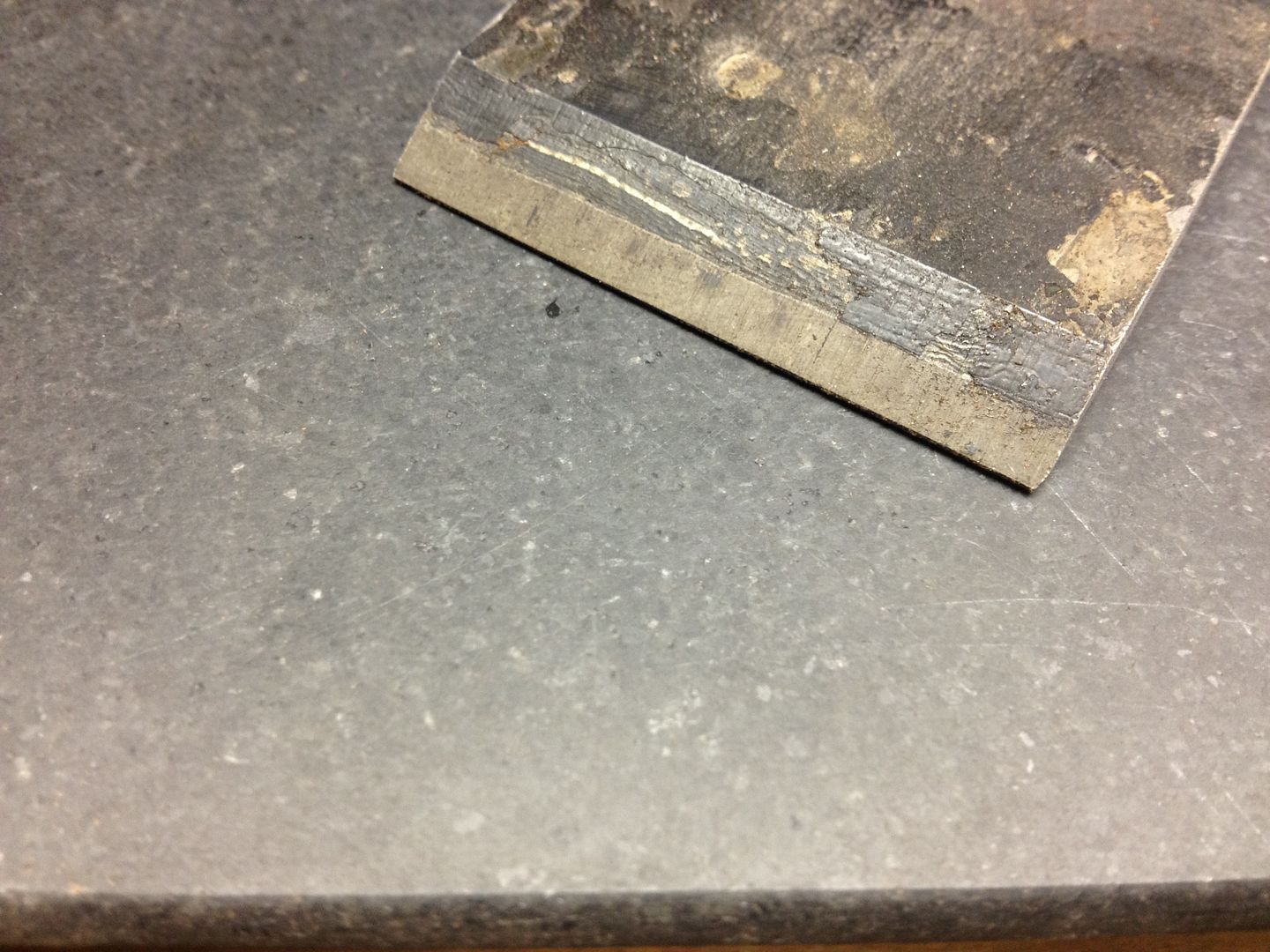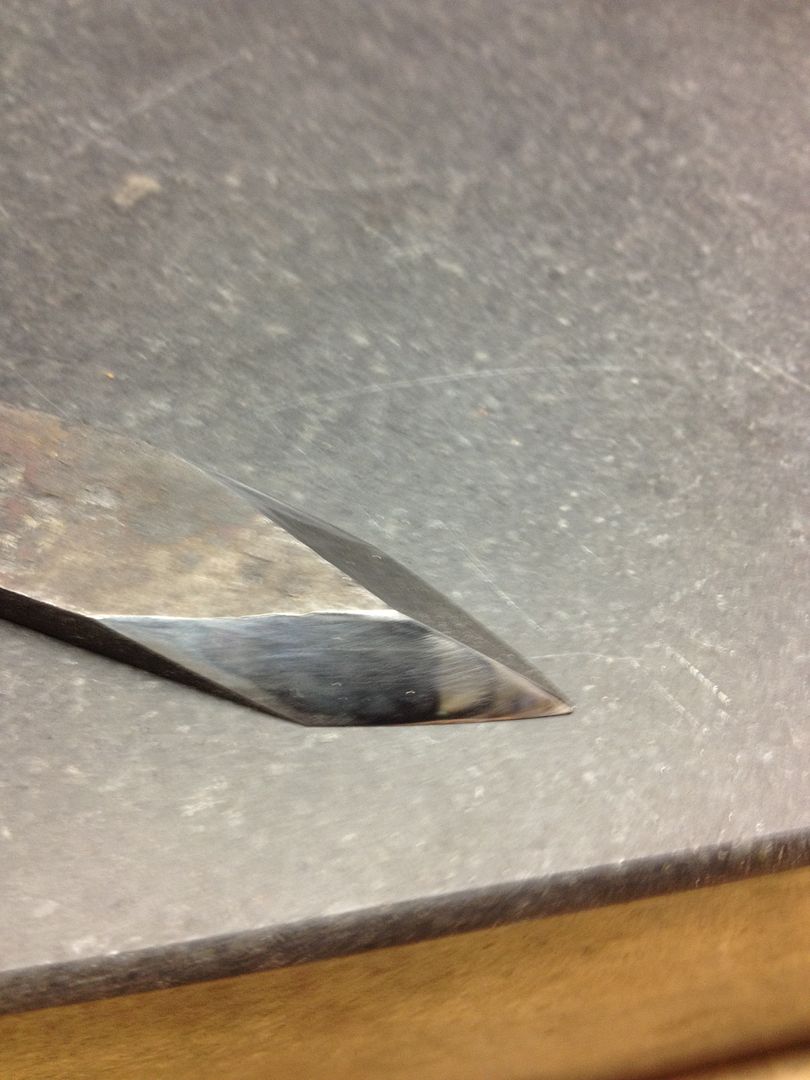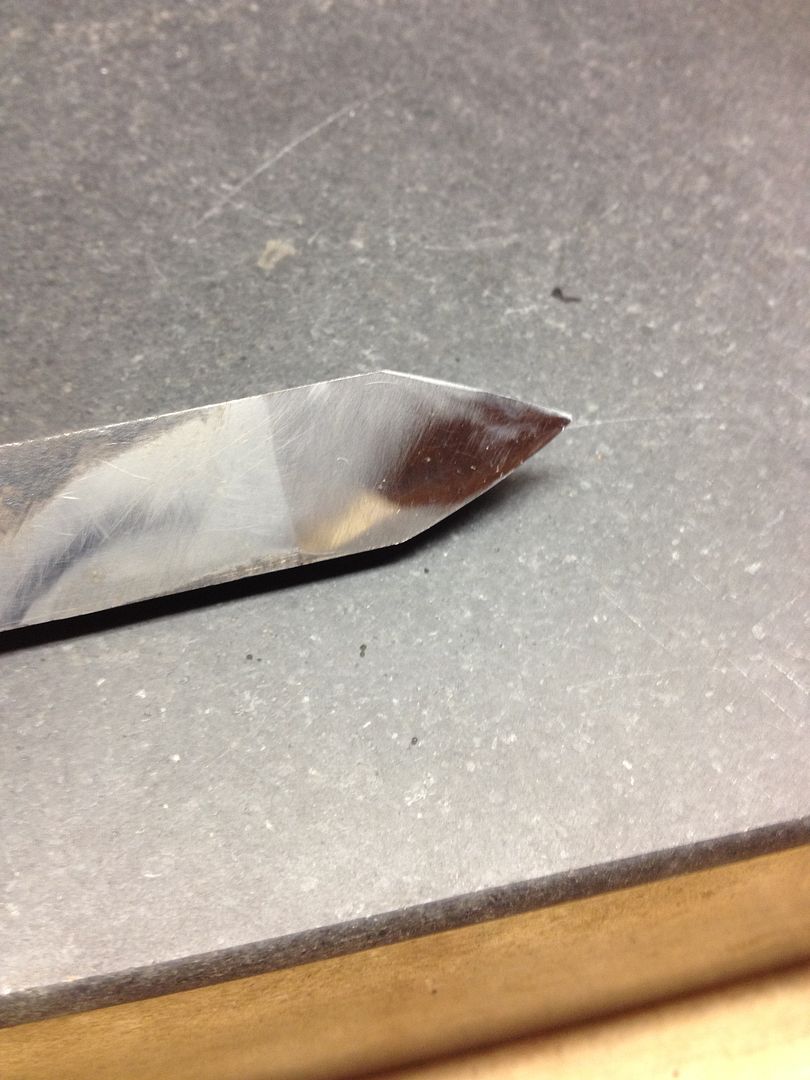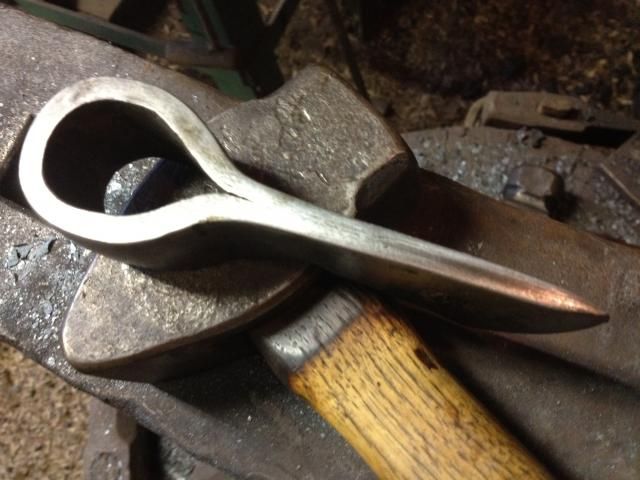Playing with a krenov style plane..The iron is appx .215 thick behind the bevel slightly thicker at top end. Laminated wrought iron and O1 edge..I planned on bedding it at 45° but have been reading that some bed at 50° with no chip breaker..Do you think their would be problems at 45°? I don't think chatter should be a problem with a thick iron like that? Whats your thoughts? thanks




 Reply With Quote
Reply With Quote









